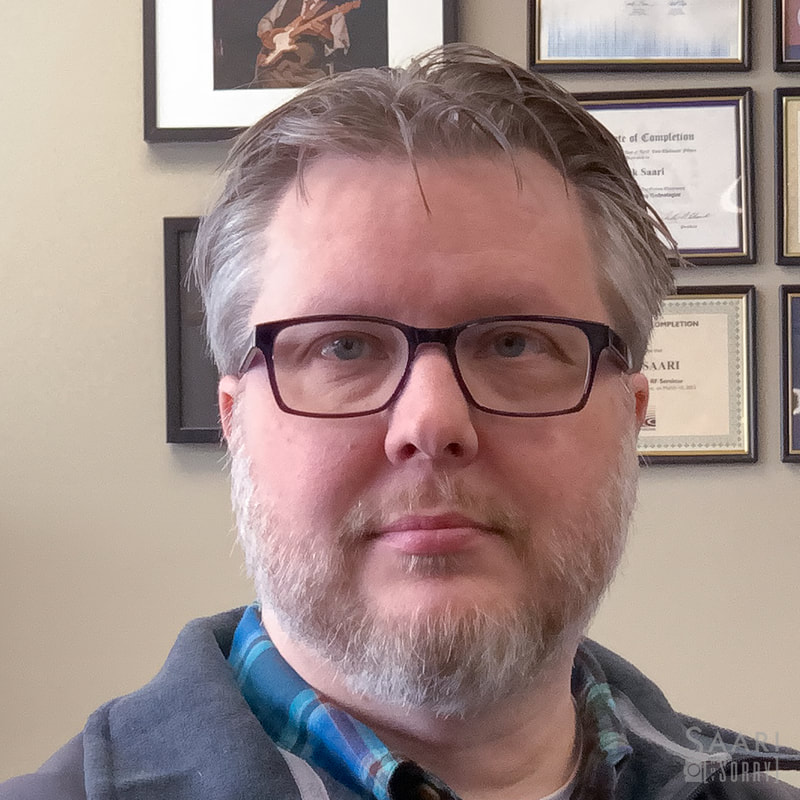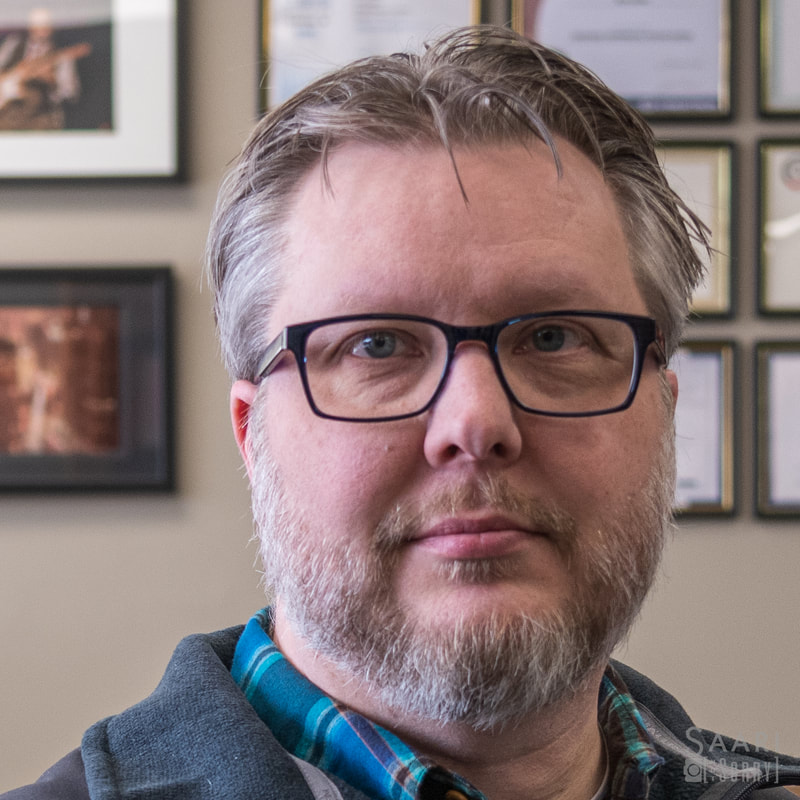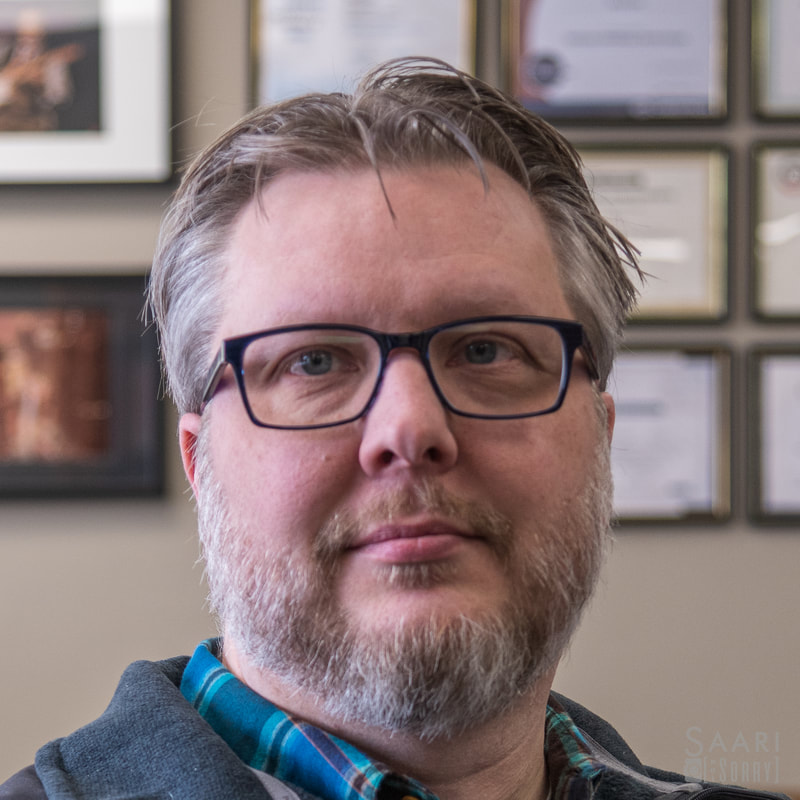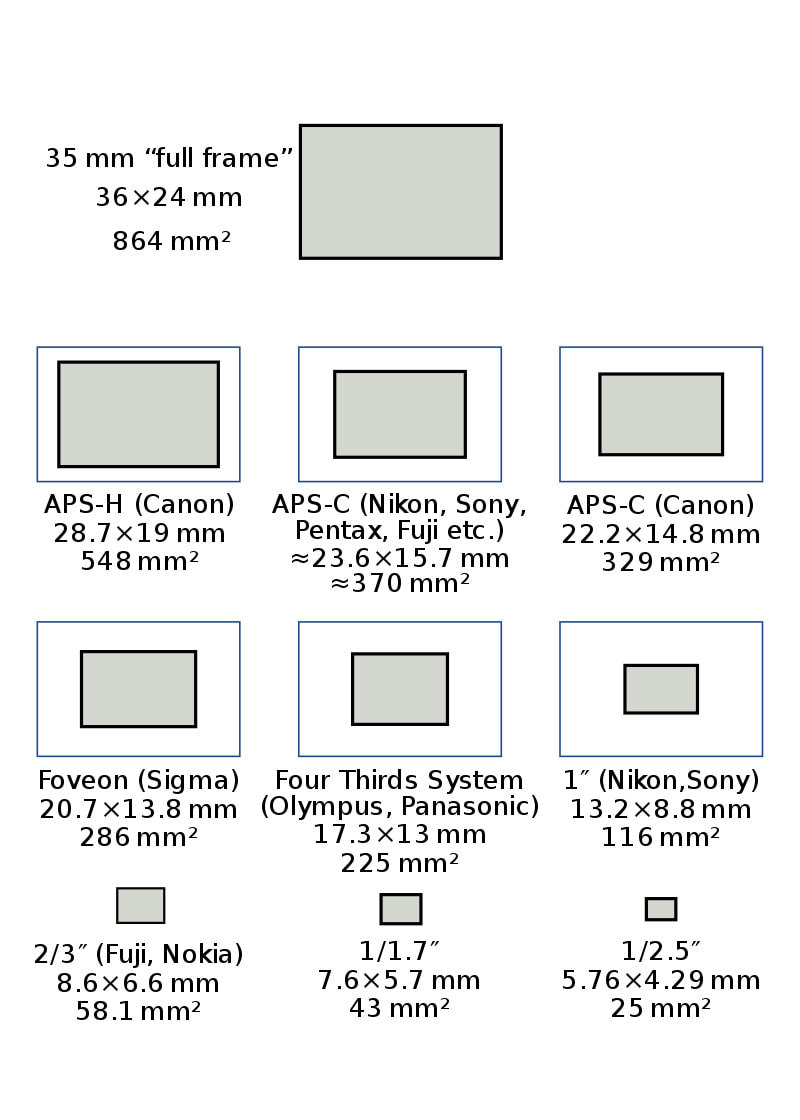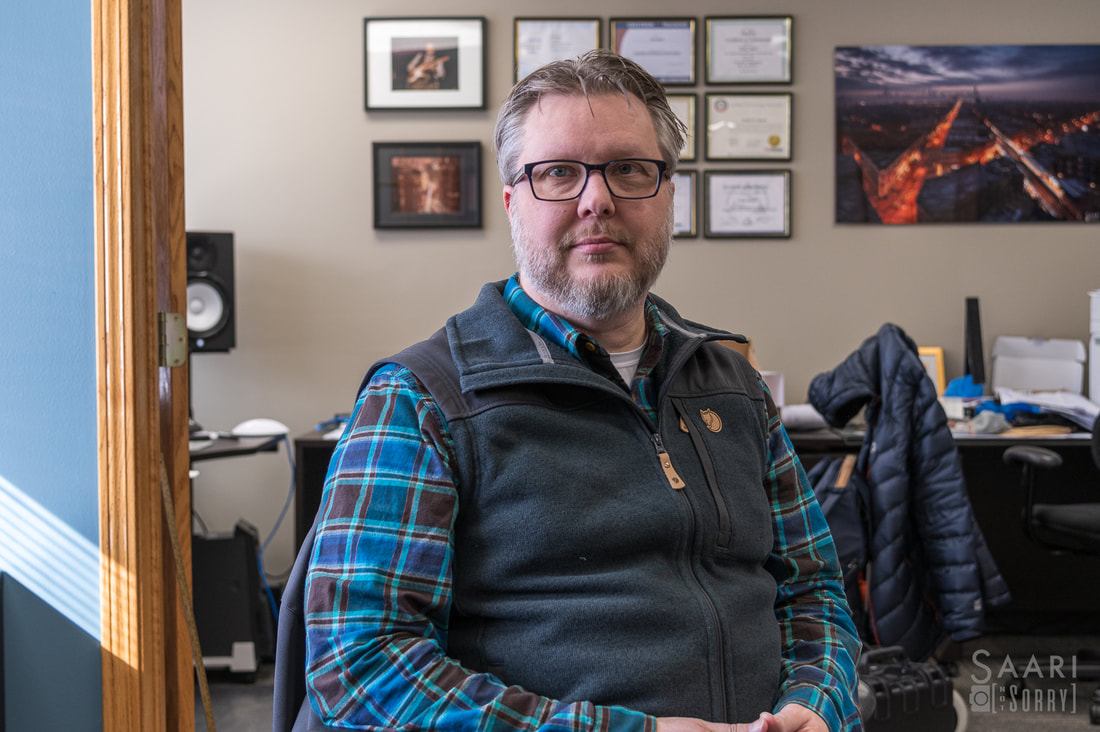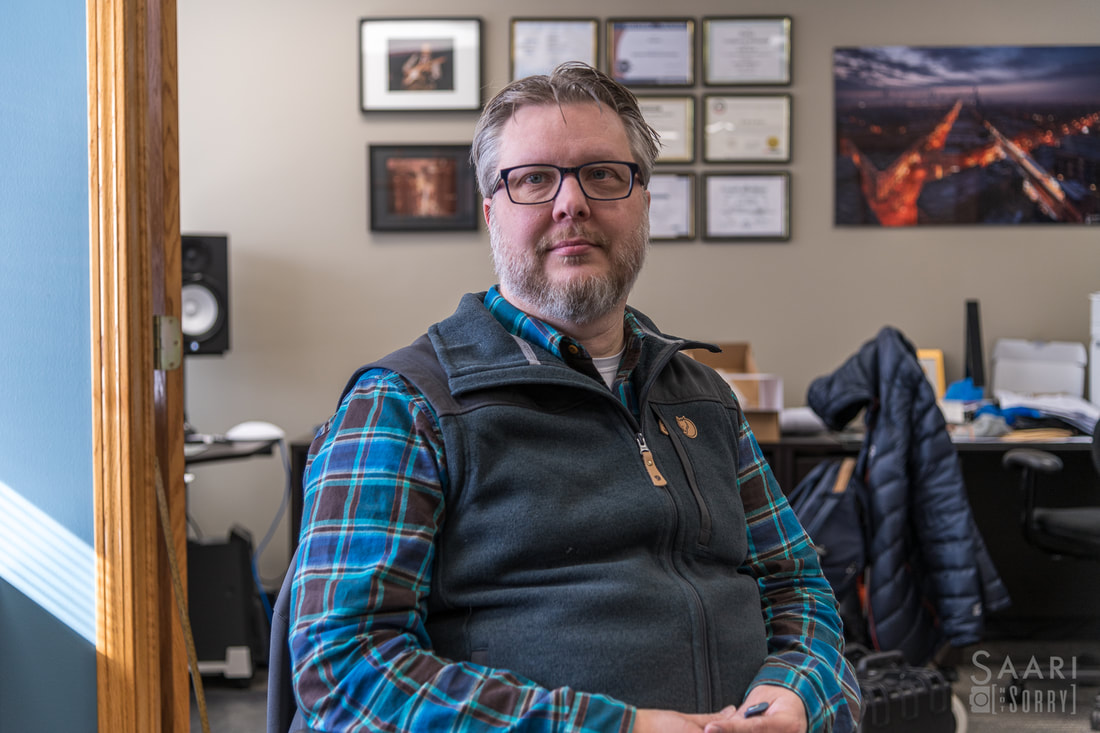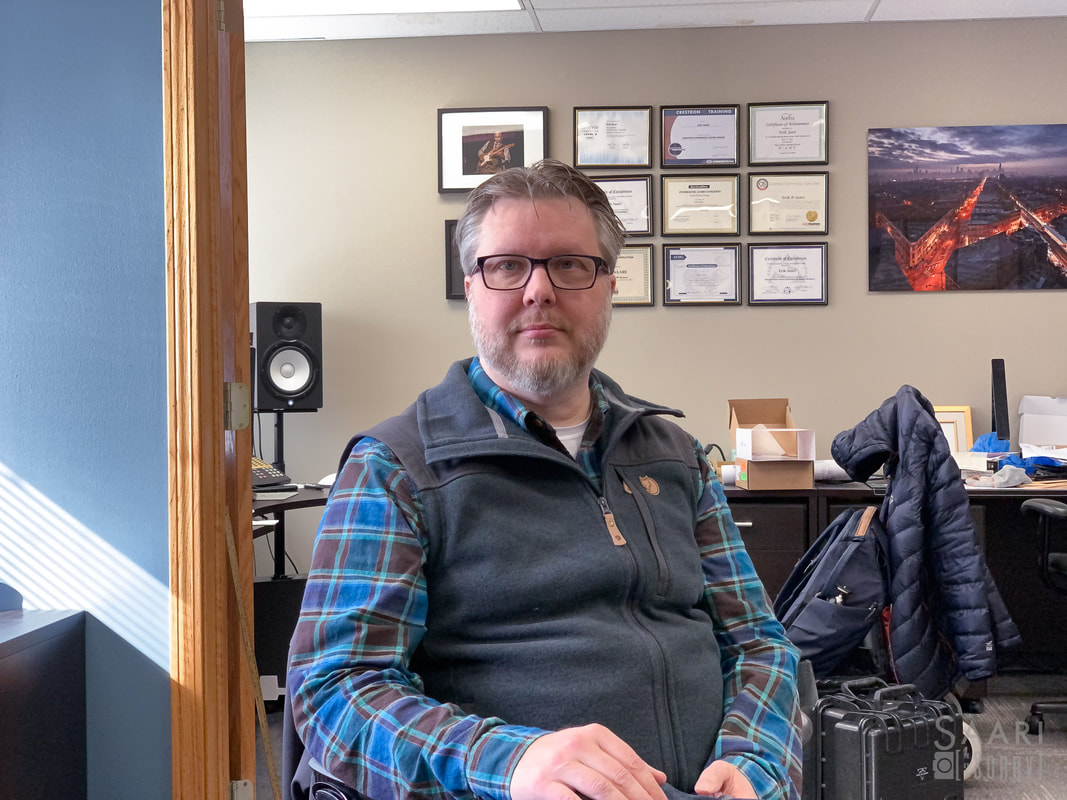How sensor size affects lens optics and aperture The images below were taken by me (of me) to illustrate how each camera sensor size behaves on the same subject size. [UPDATED 3-2-2020 for color correction] Why am I posting this on a Sound Planning page and not my photography page? Good question! Because when we install web-cameras and broadcast cameras in conference rooms, churches and distance-learning environments, we are dealing with video sensors that are the same type as in a digital camera. The camera's job is to collect light onto a sensor and the only way to do this is to build a box between the sensor and the lens. The size of the sensor dictates the size of the lens and box. How these render an image is physically related to the size. Since the advent of decent cameras on phones, the need for getting better portraits became a challenge that could not be solved optically. Why? Because the sensor and box were so small to fit on the phone, that no matter how much you wanted to have a shallow depth of field, the phone could not make that happen. With today's new iPhones etc. they can simulate this effect by using a pair of lenses and a lot of digital manipulation to mimic what happens optically. The effect that is desired is having the subject in focus and the background a beautiful blur. (if you get the small balls of light you get the magic of bokeh). This happens because of the relation of the aperture (lens opening) to the focal length and sensor size. The larger the aperture opening the smaller the "f-stop" number. To get the lens to make a sharp subject while blurring the background requires BOTH a longer focal length and a wide aperture opening or low f-stop. In the case for the test images below, we are using a full-frame 50mm focal length (lens size) as our benchmark. Please note that the 50mm is based upon the standard of a 35mm film size or full-frame photo sensor. Once we frame the same subject and size using the iPhone and cropped-frame DX sensor, we are not using 50mm lenses. We are using smaller focal lengths do to the smaller sensor. This is called "crop factor". Using the chart below you can see the 35mm full-frame at the top and the APS-C cropped frame DX below it and way below that you see the iPhone Xs at 1/2.5" I think that is enough for today, but in the next post I will go into how each manufacturer's conference room camera sensors stack up. You'd be surprised at how small the sensor is on a PTZ camera. Stay Tuned...
1 Comment
|

